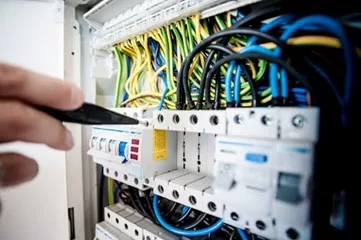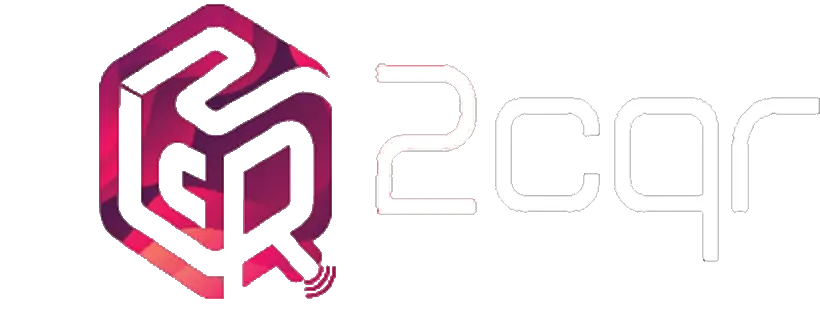What is automated maintenance and Facility Management in Libraries ?
Automated maintenance and Facility Management in libraries refers to the use of technology-driven solutions to automate and simplify various tasks associated with maintaining library facilities and equipment. This approach involves deploying automated systems and processes to handle routine maintenance checks, monitor environmental conditions, manage energy usage, and ensure the overall functionality and utility of library resources.

Examples of Automated Maintenance and Facility Management in Libraries
1. Scheduling and Tracking Maintenance Tasks :
Automated maintenance systems help libraries manage routine upkeep for their buildings and equipments. This means planning and keeping track of regular checks, fixes, and servicing for things like air conditioners, elevators, lights, fire safety systems, and more. With automation, libraries can make sure these tasks happen on time and without any issues.
These systems allow libraries to plan ahead for maintenance work, so they can do checks and fix things before they become big problems. By using automated monitoring, libraries can see how equipments is working in real-time, which helps them make smart decisions about what needs attention.
Also, automation simplifies the maintenance process by organizing schedules and centralizing maintenance-related information. Maintenance staff can easily access schedules, task lists, and equipment details from one central system, facilitating better communication and collaboration among team members. This ensures that everyone knows what needs to be done and when, resulting in faster task completion.
How do Automated Scheduling systems work ?
Automated maintenance systems rely on a combination of sensors, data analysis, and preset parameters to determine when repairs or servicing are necessary. Here's how it works:
- Sensor Technology : These systems are equipped with various sensors that are strategically placed throughout the library’s facilities and on critical equipment. These sensors can detect changes in environmental conditions (such as temperature, humidity, and air quality), equipment performance (such as vibrations, temperature fluctuations, or energy consumption), and other relevant factors.
- Data Collection : The sensors continuously collect data on the conditions and performance of the library’s infrastructure and equipment. This data is then transmitted to a centralized system for analysis and interpretation.
- Data Analysis : Automated maintenance systems use algorithms to analyze the collected data in real-time. These algorithms compare current readings with predefined thresholds and historical data to identify patterns that may indicate potential issues or areas requiring attention.
- Predictive Analytics : Based on the analysis of the collected data, the system can predict when maintenance tasks, repairs, or servicing will be needed. Predictive analytics algorithms can forecast equipment failures or deterioration based on trends and patterns observed in the data.
- Alerts and Notifications : When the system detects deviations from normal operating conditions or predicts potential issues, it generates alerts and notifications to maintenance staff. These alerts can be sent via email, SMS, or through the system’s dashboard, prompting maintenance staff to take proactive action to address the identified issues.
- Preventive Maintenance Scheduling : In addition to detecting imminent issues, automated maintenance systems also facilitate preventive maintenance scheduling. They can generate maintenance schedules based on equipment usage, manufacturer recommendations, and historical performance data, ensuring that maintenance tasks are performed regularly to prevent breakdowns and increase equipment lifespan.
2. Automated Energy Optimization :
Libraries are significant consumers of energy, utilizing power for lighting, heating, cooling, and various other systems essential for their operation. However, with the implementation of automated maintenance systems, libraries can effectively analyze energy consumption patterns and implement strategies to reduce excess energy consumption.
One key aspect of energy optimization is the intelligent management of lighting systems in libraries. Automated maintenance systems enable libraries to program lights to dim or turn off in areas that are not in use, thereby reducing unnecessary energy consumption. Motion sensors can be installed to detect activity in different sections of the library, automatically adjusting lighting levels accordingly. Additionally, libraries can utilize daylight harvesting techniques, where lighting systems adjust based on the amount of natural light available, further reducing energy usage during daylight hours.
Another area where energy optimization plays a crucial role is in the management of heating, ventilation, and air conditioning (HVAC) systems. These systems are responsible for maintaining comfortable indoor temperatures for patrons and staff. With automated maintenance systems, libraries can implement advanced control strategies for HVAC operation. For instance, occupancy sensors can signal the HVAC system to adjust temperature settings based on the number of people present in different areas of the library. Moreover, external factors such as outdoor temperature and weather conditions can be integrated into the system to further optimize HVAC performance, such as reducing or turning off the AC when the weather is already cool /Raining outside, thereby minimizing energy waste.
Additionally, libraries can use automation to implement energy-efficient practices beyond lighting and HVAC systems. For instance, automated controls can be integrated into equipment such as computers, printers, and other electronic devices to ensure they enter low-power modes when not in use.
3. Work Order Management
Work order management is an integral part of facilities management, Automated systems enables the process of managing work orders for all staff members in the library. This encompasses a wide range of daily tasks, not just maintenance-related activities.
- Creating and Assigning Tasks : Automation software allows libraries to create work orders for various tasks, including Cleaning, Book checks, shelving,Labelling and more. These tasks can be assigned to specific staff members or teams based on their expertise, availability, and workload.
- Digital Accessibility : With automated systems, staff members can access work orders digitally through dedicated platforms or mobile apps. This eliminates the need for manual paperwork and ensures that task assignments are easily accessible to all relevant personnel.
- Real-Time Updates : Team members can update the status of their assigned tasks in real-time using the automation software. This allows for cooperation among team members, as everyone has visibility into the progress of tasks.
- Performance Tracking : Automation software also enables libraries to track performance metrics related to task completion, providing insights into both staff performance and the status of facilities they worked on. Librarians can generate reports to analyze key performance indicators (KPIs), such as task completion rates, response times, and resource utilization. These insights help identify areas for improvement for each staff member and assess the overall status of library facilities.
By using work order management processes, Libraries ensures that tasks are assigned, tracked, and completed in a timely manner, allowing staff members to focus on providing excellent service to patrons while maintaining the functionality and cleanliness of library facilities.
